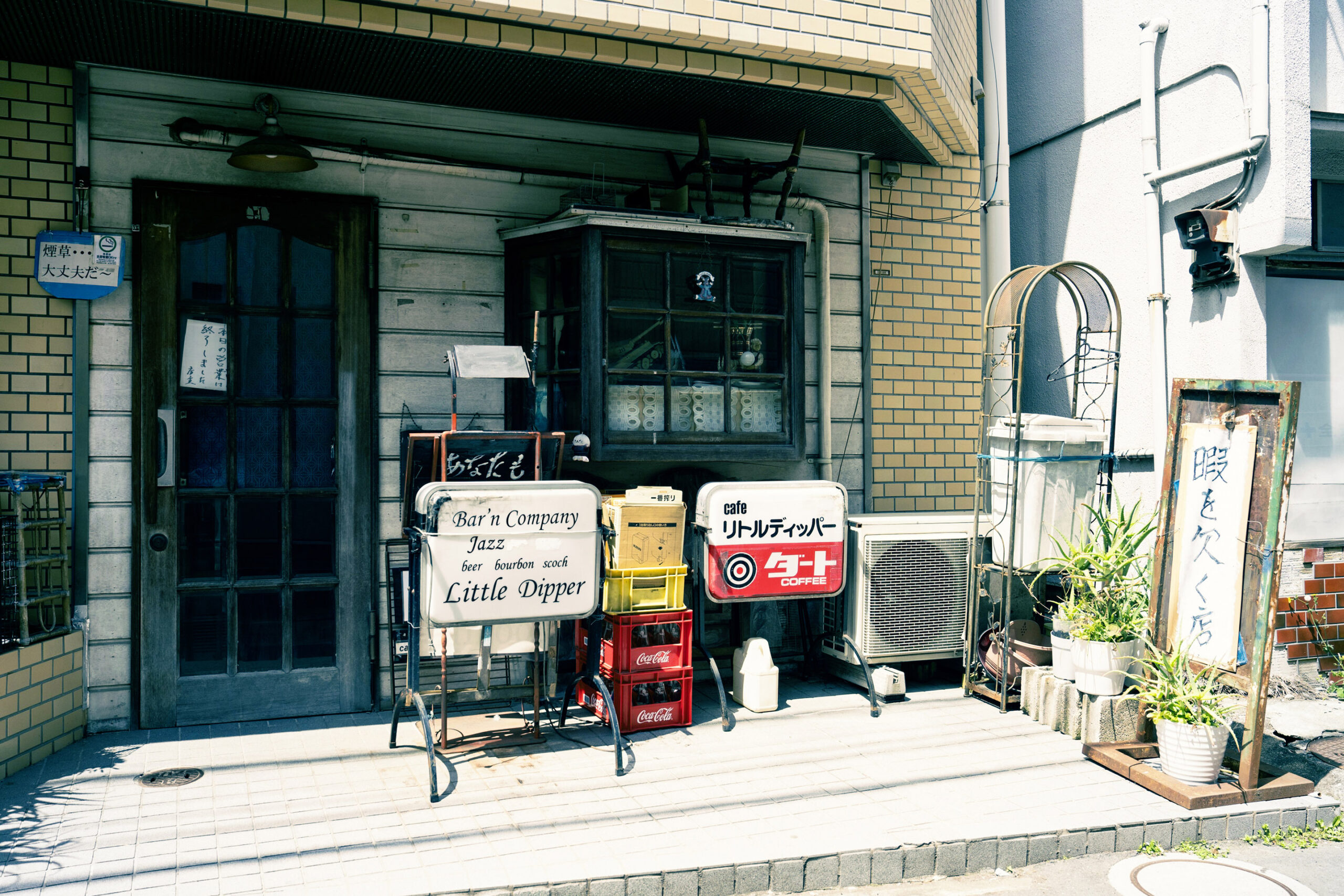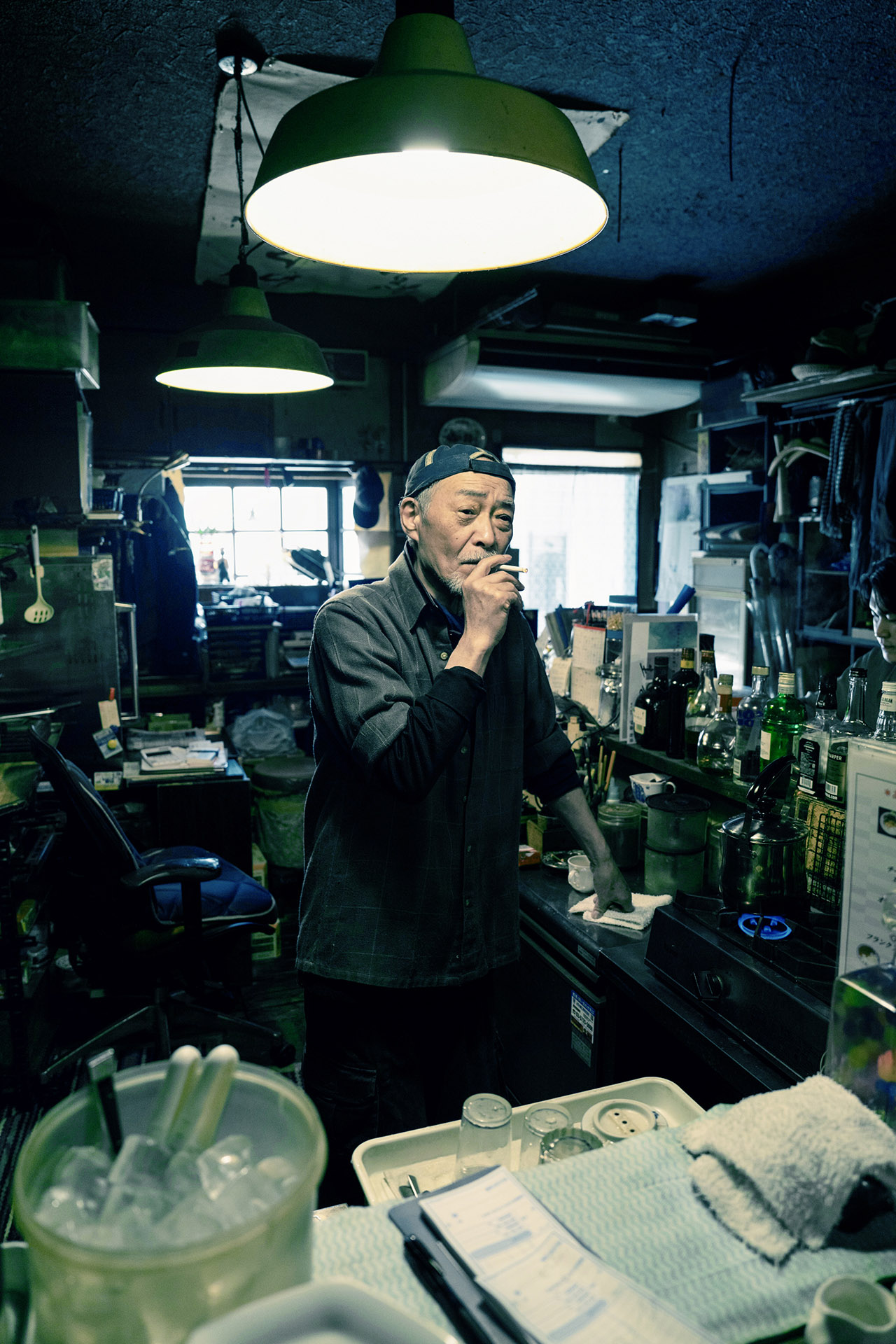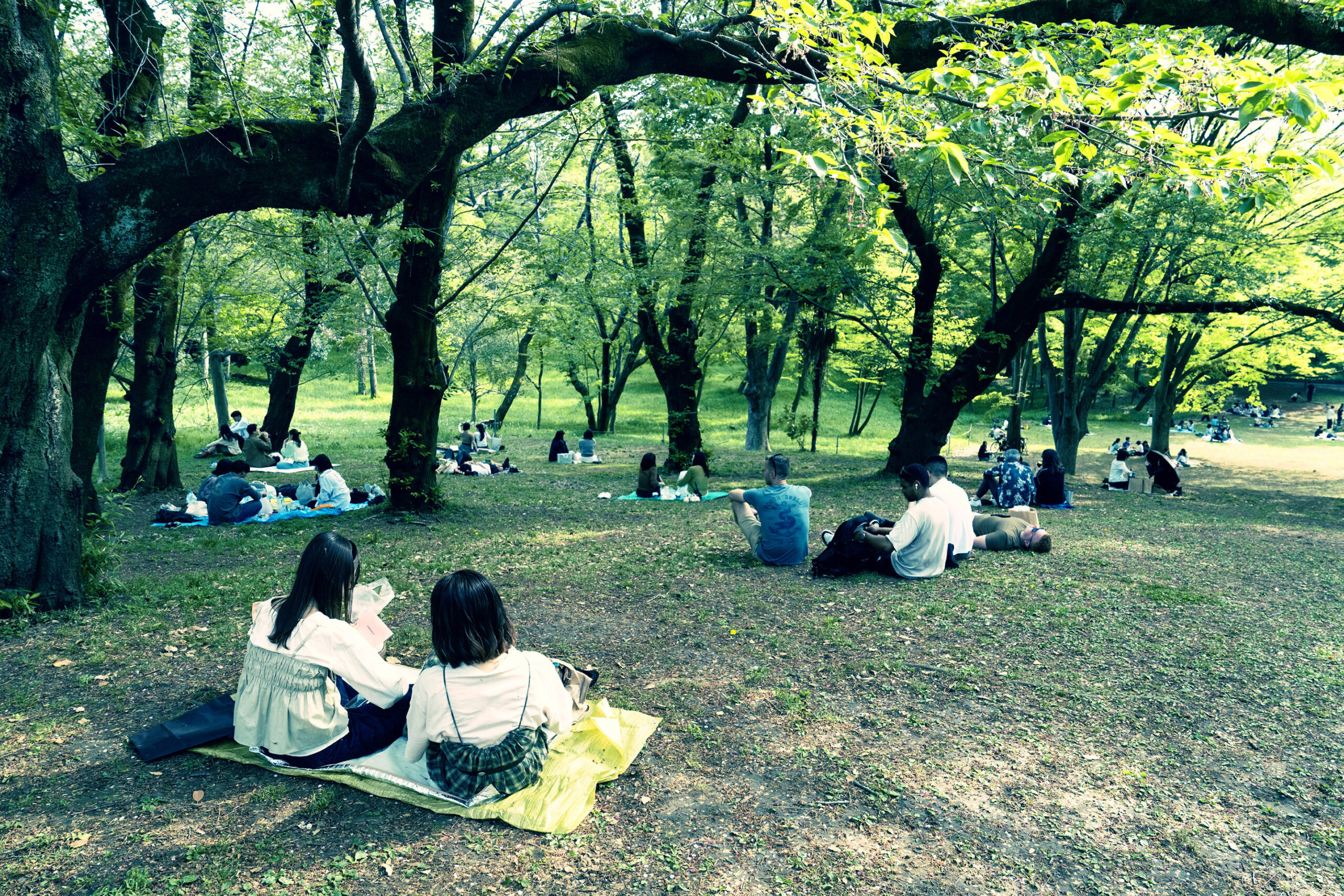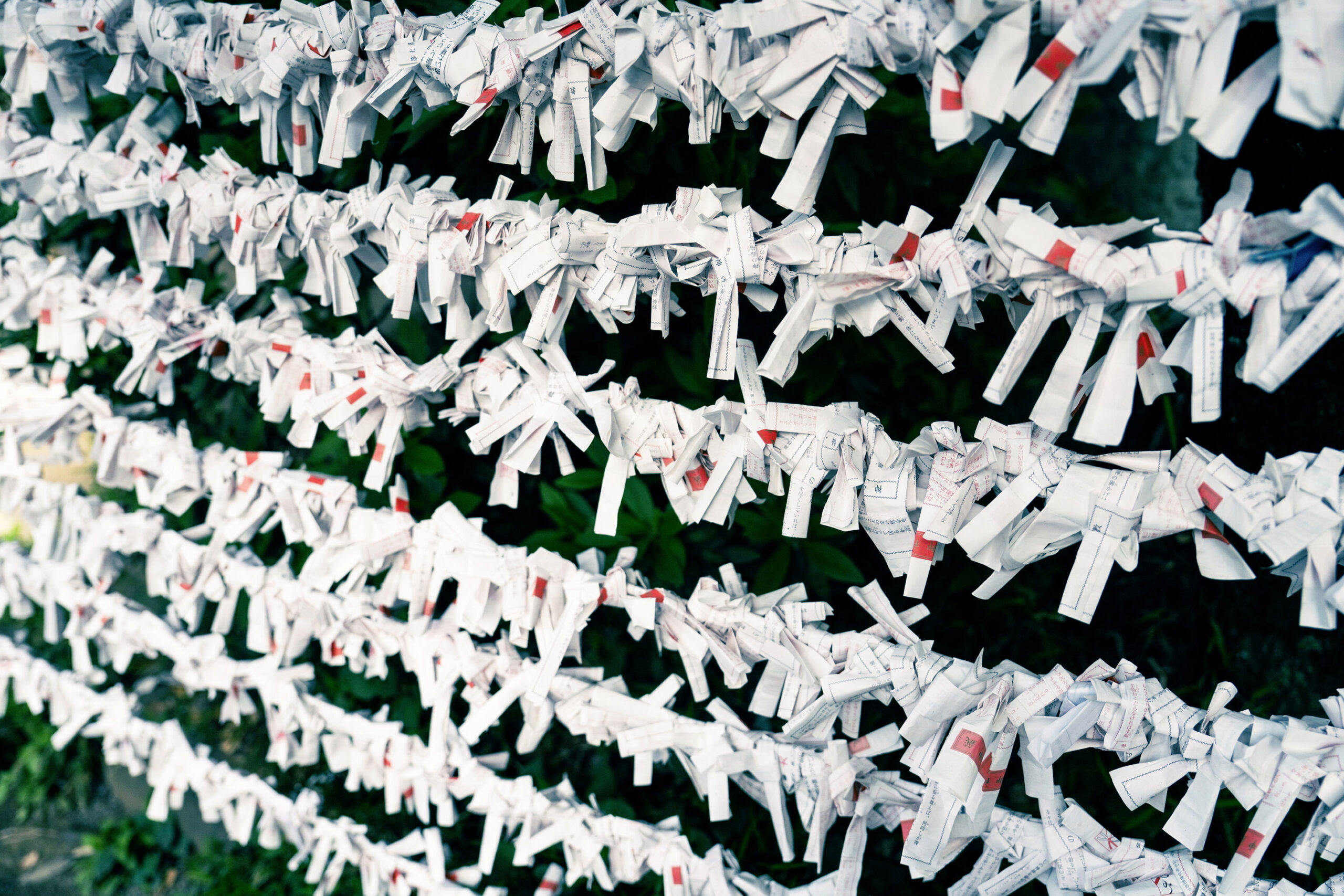The Beauty of What’s Left Unsaid Says Everything
In the seams of a coat, the silence of a tea bowl, the choreography of a street corner – Japan has shaped the way the world thinks about clothing, beauty, and meaning. Nowhere is this quiet influence more present than in Tokyo: A city where heritage and hypermodernity meet not in conflict, but in cadence.
From fashion to food, from subcultures to artisanal slowness, Tokyo doesn’t just follow trends – it absorbs, distills, reinvents. And today, a new generation of Japanese creatives is carrying this spirit forward. Rooted in tradition, open to the world, they are not merely reacting to the global conversation. They are redefining its tone.
By Malene Wagner, @tigertanuki_japaneseart. Photos: Taro Karibe, @tarokaribe
Yusuke Yatsuhashi
Designer and founder of Blue Store
(1F, Shinrin Building, 1-34-11, Tomigaya, Shibuya, Tokyo)
Like he just stepped out of a 1970s movie, Yusuke is effortlessly cool, calm, and collected, with a nostalgic twist. His Blue Store in Tomigaya oozes the same stylish feel – modern, yet rooted in tradition and artisanship. The denim brand KURO, which Yusuke established in 2010, similarly embraces the essence of Japanese cartisanship and balances tradition with innovation. The design incorporates elements of architectural aesthetics, using fabric from seven different suppliers. Blue Store is a true haven for denim enthusiasts and a must-visit.
Jimbocho
(Kanda Jimbocho, Chiyoda, Tokyo)
Jimbocho is the historical book area of Tokyo, dating back to the Edo period (1603-1867). Today, it remains a book lover’s paradise, with one store after the other offering endless selections of old and new books and magazines. Yusuke’s latest find is a catalogue of Yokoo Tadanori, one of Japan’s most renowned graphic designers known for his 1960-70s psychedelic meets Edo pop aesthetics.
Little Dipper
(1F, Berubi Matsuya, 1-6-7, Tomigaya, Shibuya, Tokyo)
Yusuke’s favorite café Little Dipper is only a short walk from his store. It opens at 12pm and you are welcomed by the eccentric and heart-warming owner Yoshio Kobayashi. The food and coffee are delicious. Also making it worth a visit are his out-of-this-world homemade lemon cookies!



Yoshio Kobayashi
Owner of Little Dipper
(1F, Berubi Matsuya, 1-6-7, Tomigaya, Shibuya, Tokyo)
Little Dipper is one of the most unique establishments you will come across. And that says a lot in a city full of quirky and quaint spots. This has much to do with the personal and cosy atmosphere and interior, but even more so with the man behind the counter: owner Yoshio Kobayashi. He has been running the place for forty years, attracting people from all walks of life, with a long list of regulars that include designers, famous actors and tv personalities. Yoshio quickly strikes up a conversation, becoming both your friend and therapist within two minutes.
Yoyogi Park
(2-1, Kamizonocho, Yoyogi, Shibuya, Tokyo)
Not too far from Yoshio’s café is one of Tokyo’s largest parks, located in the heart of Tokyo in the popular area of Shibuya. in the middle of Tokyo’s busy life and traffic, this is a place where Yoshio finds peace and quiet to contemplate. It might be slightly touristic but by venturing down almost untrodden paths, you can find yourself in a dreamy garden with a lake, carps and water lilies.
Yoyogi Hachiman Shrine
(5-1-1, Yoyogi, Shibuya, Tokyo)
A short walk from Yoyogi park is a ‘hidden’ time pocket on top of a small, wooded hill, where Yoshio also enjoys spending some down time. The Shinto shrine dates back to 1212 and is dedicated to Hachiman, a deification of Emperor Ojin (201-312) and the guardian god of warriors.



Kaori Kikunaga
Designer portrayed at her studio
(Higashiyama, Meguro, Tokyo)
After graduating from Bunka Fashion College in 2009, Kaori worked in costume production and production management for Japanese brands before launching her own brand in the Fall/Winter of 2019/20. From her studio in Meguro, she has a new project under way, as she plans to rebrand, and rename her current label to LALOH in 2026. Her style is clean and elegant, with a gentle sculptural effect drawing inspiration from both East and West.
National Museum of Nature and Science
(1-23-2, Uenokoen, Taito, Tokyo)
The National Museum of Nature and Science was founded in 1877 and is one of the oldest Western-style museums in Japan. It offers a comprehensive collection of exhibits about the Earth, life, science and technology. Kaori often spends long hours here, finding inspiration as she reflects on the ideal relation between humanity, nature and the environment, as well as on the past, present and future.
Kyu-Asakura House
(29-20, Sarugakucho, Shibuya, Tokyo)
Kyu-Asakura House is an old wooden house in the center of modern Tokyo, built as a private residence in 1919. The house was designated an Important Cultural Property by the Japanese Government due to its architecture, history and because it is a rare example of a large wooden house that survived the Great Kanto Earthquake of 1923. “The beautifully designed garden harmonises delicately with nature, allowing visitors to experience the changing of the seasons. Inside the house, the carefully considered lighting and spatial design, crafted with a distinctly Japanese sensibility, create an atmosphere so serene that it is hard to believe you are still in the heart of Tokyo”, Kaori explains.





Takahito
Koyama
Owner of hair salon fil
(1-13-11, Aobadai, Meguro, Tokyo)
A hairdresser for more than fifteen years, his Salon “fil” is located in the idyllic area along the Meguro River, where his exclusive clientele (including many celebrities – but don’t tell anyone), come to have their hair done. Elegant and understated, the salon mirrors its owner. Recently Takahito launched Lynarch, a new product line for everyday haircare. The products are silicone-free, and with the woody amber scent of patchouli as the main ingredient and a refreshing green top note. Tried and tested – this is truly an amazing product. For appointments: info@fil-hair.com
Meguro River
(1 Aobadai, Meguro, Tokyo).
It is no coincidence that Takahito’s salon is situated by the Meguro River, as this is one of his most beloved spots in Tokyo. Especially during cherry blossom season in early spring, the area turns into a pink dream of sakura, as people gather along the water to celebrate the special time of the year.
SCAD
(2-12-2, Kamimeguro, Meguro, Tokyo)
Wine Bar SCAD in Nakameguro, which has been running for more than ten years, is owned by an excellent sommelier, a friend of Takahito’s, and it is his local hang out. However, many people also come from afar to try the special wine selection, not to mention the pasta and sandwiches – they come highly recommended.



Shurin
@_po_po_pon
Toy Artist portrayed in her shared studio space
(2-3-10, Yanagihara, Adachi, Tokyo)
Shurin’s studio is located near busy Akihabara, tucked away down a small side street, where the young artist works on her toy sculptures. She studies at the prestigious Tokyo University of the Arts in the design department and is one of the very few creating prototypes using CG software and producing figures mainly using a 3D printer. Her works incorporate the strangeness and abnormality of horror and suspense movies, as well as pop images from cartoons. She recently participated in the exhibition “Print the Future” at Laforet.
Robot Robot
(5-52-15, Nakano, Nakano, Tokyo)
For a culture obsessed with robots and toys, it is no wonder that the shop “Robot Robot”, specializing in vintage Japanese and Western toys and figures, is a collector’s mecca. From Godzilla and Bandai to My Little Pony and Marvel – you will meet all your childhood heroes (and horrors) here. This is a world that Shurin loves and in the store located on Nakano Broadway Shurin finds endless inspiration for her own weird and wonderful creations.
Barbecue Restaurant Akachan
(Hirata building, 21-6, Senjuasahicho,Adachi, Tokyo)
Located in Kita Senju just around the corner from Shurin’s studio, this is the local barbecue restaurant where she often goes with her artist friends after a hard day’s work. Her favorite dish on the menu: All-you-can-eat grilled horumonyaki (made from beef or pork intestines).




Nene
Singer, Portrayed at Dear Stage
(3-10-9, Sotokanda, Chiyoda, Tokyo)
Nene is part of the pop idol group, MEME TOKYO IDOL, which was formed in 2019 and consists of six members. The group performs at Dear Stage, one of the most popular night spots for Akihabara’s legion of otaku (simply put: geeks). The group’s popstar uniform might be difficult to differentiate from others at first sight, but once you notice the details, it is clear that each member’s style is unique and has a somewhat rebellious approach to the generic kawaii (cute) concept. Nene is a true example of someone who thinks outside of conventions and reinvents them, which is also demonstrated in her solo project Romantic Addiction where her roots in funk, R&B and hip hop are combined with romantic lyrics and a sprinkling of realism.
Shimokitazawa
(2-24, Kitazawa, Setagaya, Tokyo)
Also known as Shimokita, it is Tokyo’s bohemian neighborhood in Setagaya in the western part of Tokyo, known for its vintage clothes, trendy cafés, indie music and bookshops. With a rich subculture and among Tokyo’s best spots for thrift shopping and vintage clothes, Nene enjoys browsing and finds not only inspiration but also gems to compliment her very cool wardrobe.
Unko Museum
(1-1-10, Aomi, Koto, Tokyo)
Unusual, yet very Japanese is the Unko Museum (poop museum) in Odaiba, in the eastern part of Tokyo. The museum even has its own theme song. This museum is a favourite of Nene’s – “it’s all about breaking down stereotypes,” she says. “Come and enjoy this unique unko kawaii (disgustingly cute) world and look at, touch, photograph, and play with poop, for a unique experience that can be found nowhere else.”



Ichibay Hide
Tatoo artist, Portrayed in his studio
(3-27-14, Jingumae, Shibuya, Tokyo)
Beginning in 2005 at the age of 26, Ichibay started doing tattoos independently at his family’s house. He then began training under his teacher Sabado, but true to Ichibay’s rebellious nature he was told to leave after only six months. This didn’t faze Ichibay, who kept at his work, and also started painting, with much of his art having been turned into merchandise. Today he is one of the leading tattoo artists of the renowned Three Tides Tattoo Studio, which was established in 1998 in Tokyo and Osaka, and people travel from abroad just to get an appointment with him. Also an art collector, Ichibay’s studio is filled with quality flea market finds (especially from Oeodo), including sculptures and original woodblock prints (ukiyo-e) – not to forget his pet turtle, the goldfish and the latest addition to the family, the 1-year-old Japanese Chin, Momotaro.
Matsumoto Seika
(6-14-1, Jingumae, Shibuya, Tokyo).
In the same building are two of Ichibay’s go-to-places for food that take you from the hustle and bustle of the busy streets of Shibuya to the alleyways of a bygone time. One is local vegetable shop Matsumoto Seika. On top of the stairs is his favorite sushi spot, where he often treats his foreign guests to the most delicious sashimi.
Hands
(12-18, Udagawacho, Shibuya, Tokyo).
Formerly called Tokyu Hands, Hands is a hobby department store that focused on crafts and DIY, the first which opened in Shibuya in 1976. Here you can find any and everything your crafty and creative heart desires. Over the years more sections have been added and now the all-encompassing store includes everything from stationary to carrot peelers and toilet covers, and anything you need for your pet. This is also the place where Ichibay goes to find toys and treats for Momotaro.





Yasuko Monden
Owner of Taneda no Tabi Isogai Shoten
(1-10-2, Narihira, Sumida, Tokyo)
The store was founded during the Taisho period (1912-1926) and is still run as a family business of workwear. Owner is the most welcoming and delightful Yasuko, now in her late 70s, whose grandfather started the business. Initially, they produced traditional construction workers’ shoes (jika-tabi), made entirely by hand by eight different craftsmen and -women, each contributing to a specific part of the production. But with modern times and new safety rules being put into place, there are no longer customers for the age-old design and consequently, no craftspeople are left to pass on their skills to future generations. The shop luckily survives by providing workwear clothes of the highest quality fabric that is both durable and lightweight, using original and traditional techniques. However, as the need for and appreciation of traditional crafts diminishes, there is a risk of Yasuo’s shop having to close.
Ueno-Park
(4, Uenokoen, Taito, Tokyo)
A place that Yasuko likes to visit is Ueno Park. It is one of Japan’s five oldest public parks and is home to many of Tokyo’s larger museums. The park was established in 1873 following Western ideas, which dominated much of Japan’s rapid change and modernisation during the Meiji period (1867-1912), after almost 250 years of isolation from the outside world.
Tokyo Skytree
(1-1-2, Oshiage, Sumida, Tokyo)
Tokyo Skytree in Oshiage was designed by Nikken Sekkei in a neo-futuristic style. It opened in 2012 and changed the neighbourhood of Sumida, which has flourished as a manufacturing town since the Edo period (1603-1867). For Yasuko, Skytree symbolises the development and change of the old district area that became soewhat neglected towards the end of the 20th century, but now draws both Tokyoites and tourists to its many shops of crafts, design, and fashion, which includes Yasuo’s own business.






Bidou Yamaguchi
Noh Mask Maker Portrayed at Zenkokuji Temple
(5-36, Kagurazaka, Shinjuku, Tokyo)
At first glance, Bidou might be mistaken for someone working in high-end fashion, with his distinctive and curated look. But Bidou is a craftsman. An artist. A maker of traditional Noh masks for almost thirty years. Noh theater is a classical dance-drama that has been performed since the 14th century, where the dancers wear iconic masks representing specific characters. The Zenkokuji Temple in Kagurazaka is dedicated to Bishamonten, the god of war. It was from him that Bidou’s sensei [teacher] drew his artist name ‘Bidou’ as a symbol of victory. As a testimony to Bidou’s immense talent and high technical skills, after only 4.5 years of training his teacher decided that he had learned enough of the traditional craft. Since then, Bidou found his very own path and moved outside of the traditional Noh culture with his mission to create a new history in the world of Noh mask makers. This has brought his pieces that convey the Japanese idea of mysterious beauty, known as yugen, not only to international stages of performance, but also to museum collections in Europe and USA.
Safari
(3-57-4, Koenji Minami, Suginami, Tokyo)
Safari is a vintage clothes shop and probably the best known in Koenji. It consists of six shops specializing in different things, including one selling antiques and art. As a big lover of fashion, Bidou often finds unique items, including his latest purchase: A vintage military jacket.
Inokashira Park
(1-18, Gotenyama, Musashino city, Tokyo)
Bidou’s favorite park is located near Kichijoji Station, a large wood park west of Tokyo. With around 500 cherry blossom trees and a large beautiful pond in the middle, Inokashira Park is a fantastic sakura [cherry blossoms] spot in Tokyo in Spring and a place to unwind.




